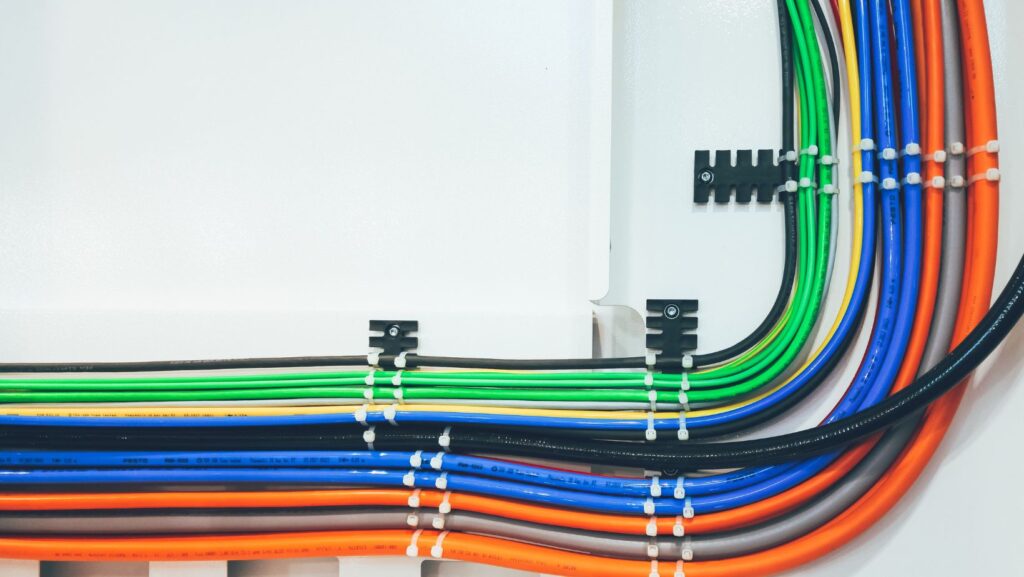If you’ve ever tripped over a stray cable at home or work, you know the importance of proper cable management. But it’s not just about safety; it’s about aesthetics too. That’s where cable molding comes in. This unsung hero of the tech world keeps your wires neat, organized, and out of sight.
Cable molding may seem like a mundane topic, but once you delve into it, you’ll realize its significance. From enhancing decor to improving safety, cable molding plays a vital role in our tech-driven lives. This article will serve as your ultimate guide, shedding light on the ins and outs of cable molding.
What is Cable Molding?
Cable molding, in essence, is a designated conduit designed to house and organize wires or cables. Acting as protectors, they streamline bulky wire bundles, improving safety by reducing the risk of cable damage or tangling. They’re particularly beneficial in areas characterized by an extensive number of interconnected systems and devices. Made from diverse materials such as PVC, metal, or TPU, cable moldings are durable, offering long-term solutions for cable management challenges.
In the digital age, cable molding’s significance becomes more profound. Electronics typically come with a mess of cords and cables, which, without adequate management, become unsightly and hazardous. By neatly containing and hiding wires, cable moldings, therefore, enhance both aesthetics and safety within an environment.
Understanding the various types of cable molding gives users the advantage when tackling specific cable organization tasks. Some common types include:
- Surface Raceways: These plastic channels adhere to the wall surface, providing an easy and attractive way to conceal cables.
- Cable Trays: For larger quantities of network cables in commercial or industrial settings, cable trays prove ideal.
- Under-Floor Cable Trays: Often used in office environments, under-floor trays keep cables hidden and walkers safe.
Moreover, modern advancements, such as CNC (Computer Numeric Control), have paved the way for custom cable molding creations.

Firms like Cloom provide custom wiring harness services, tailoring cable molding solutions to an individual’s specific requirements. With these technological advancements, there’s an almost surefire way to handle any cable management challenges efficiently and aesthetically.
Cable Molding Machine Understanding & Cable Molding Process
Delving into the machinery aspect, the cable molding machine plays a vital role in the efficient production of cable moldings. Primarily, it involves a process of heat and pressure through which plastic materials, typically TPU (Thermoplastic Polyurethane), get formed into a final product. CNC, or Computer Numeric Control, adds another dimension to the machine’s operation, offering precision, speed and consistency.
CNC Enabling Precision
CNC machines dictate the path of production. They direct the machine’s actions, ensuring the production of accurate and high-quality cable moldings. Every detail of the molding process gets dictated by the CNC’s numerical instructions. Thus, producing intricate designs perfect for custom cable moldings becomes plausible with CNC. Corporations such as Cloom utilize this state-of-the-art technology for customized wiring harness production.
Understanding the Cable Molding Process
Transitioning to the process, cable molding begins with the preparation of the plastic material. This material, typically TPU, gets heated until it reaches a liquid state. Injected into the molding machine, it’s subjected to high pressure. Under this pressured environment, the plastic takes the shape of the mold, fits around the cables and hardens.
Once hardened, the mold gets cooled and then ejected from the machine, resulting in a finished product, a durable and aesthetically pleasing cable mold. Processing variables such as pressure, temperature, and cooling time are critical factors that influence the quality of the final product, ensuring molding consistency.
Cable Molding Tools
In the process of creating cable moldings, specific tools and machinery play integral roles. Among these, CNC (Computer Numeric Control) equipment stands out for its precision and consistency. This advanced machinery can craft intricate designs for custom cable moldings, embodying efficient production alongside outstanding quality.
Understanding these tools is pivotal for a well-rounded view of the cable molding field. Two of the primary tools used are mold clamps and mold frames. Mold clamps, designed to hold cable moldings into place under high pressure and temperature, provide stability during the molding process. Mold frames, on the other hand, shape the cable molding during formation, defining its final appearance.
In addition, temperature controllers play a crucial role. Acting as the gatekeepers of heat management, they ensure optimal temperature levels during the molding process, affecting the molding’s durability and functionality. Similarly, cooling systems, essential for reducing heat after the molding process, contribute to a controlled cooling down period, a factor with significant implications on the overall quality of the end product.
Resins Used in Cable Molding
For manufacturing reliable, durable, and aesthetically pleasing cable moldings, resin selection plays a pivotal role. Companies like Cloom treat this aspect with utmost importance, employing advanced materials like Thermoplastic Polyurethane (TPU) to cater to unique client requirements for custom wiring harnesses.

TPU, a type of elastomer, glows for its elasticity, oil resistance, and sheer strength, making it a preferred choice in cable molding. Moreover, its compatibility with the Computer Numeric Control (CNC) equipment ensures a smooth production process, resulting in distinct mouldings that correctly meet the design prescriptions.
Choosing the correct resin forms a bulk of the challenge. To find the ideal match, one can connect with experienced providers like Cloom. Contact Cloom as it extends its expertise in understanding the precise requirements and selecting the best suited resin for custom wiring harness solutions.
Benefits of Cable Molding
So there you have it: the ins and outs of cable molding. It’s clear that cable management is no small task. Yet with the right tools and materials, it becomes a manageable and even enjoyable process. Cable molding, with its variety of types like surface raceways and cable trays, offers a solution tailored to your specific needs. Modern CNC technology takes this a step further, paving the way for custom solutions.
The machinery involved in the process, from mold clamps to temperature controllers, ensures precision and quality. Material selection, especially resins like TPU, PVC, and PE, plays a pivotal role in the outcome. It’s a delicate balance of aesthetics and efficiency, and companies like Cloom are there to guide you through this crucial decision.



